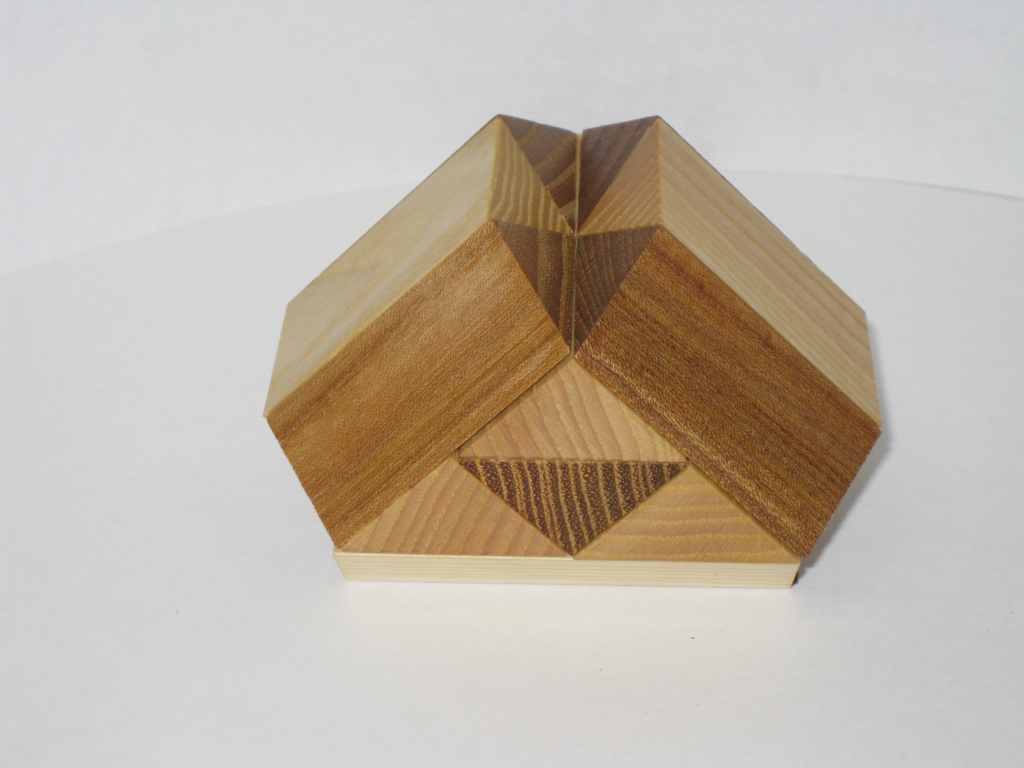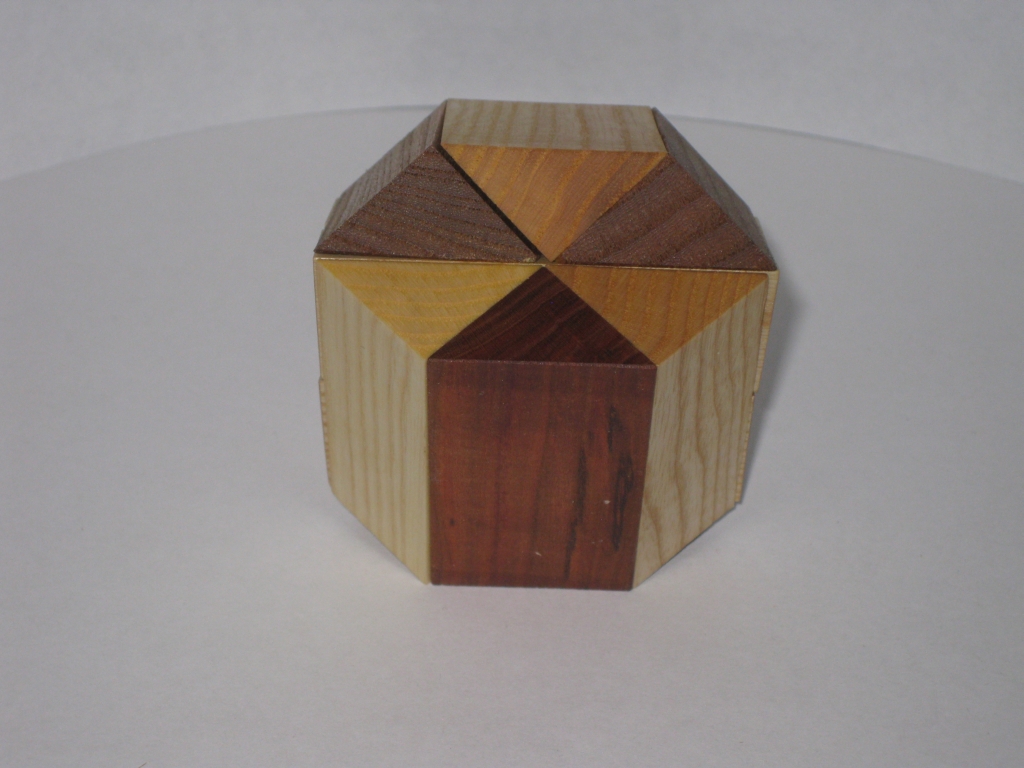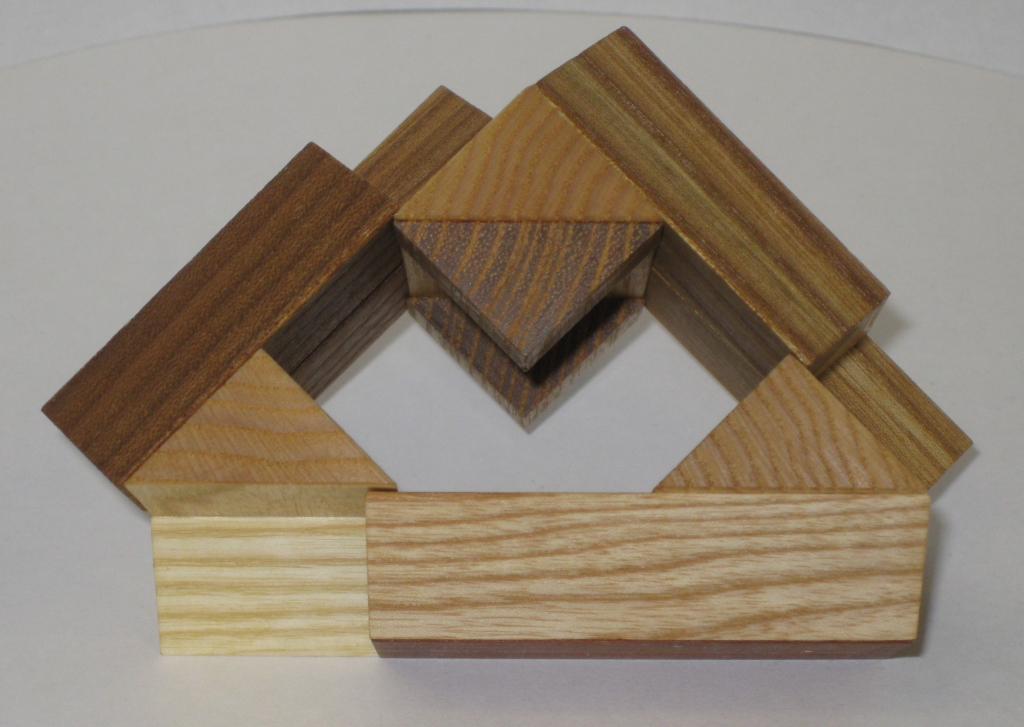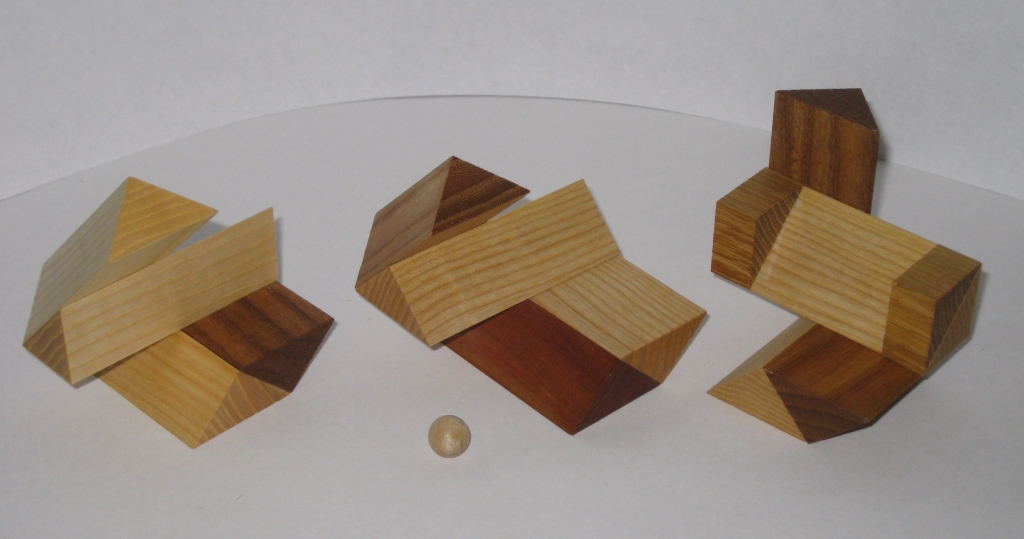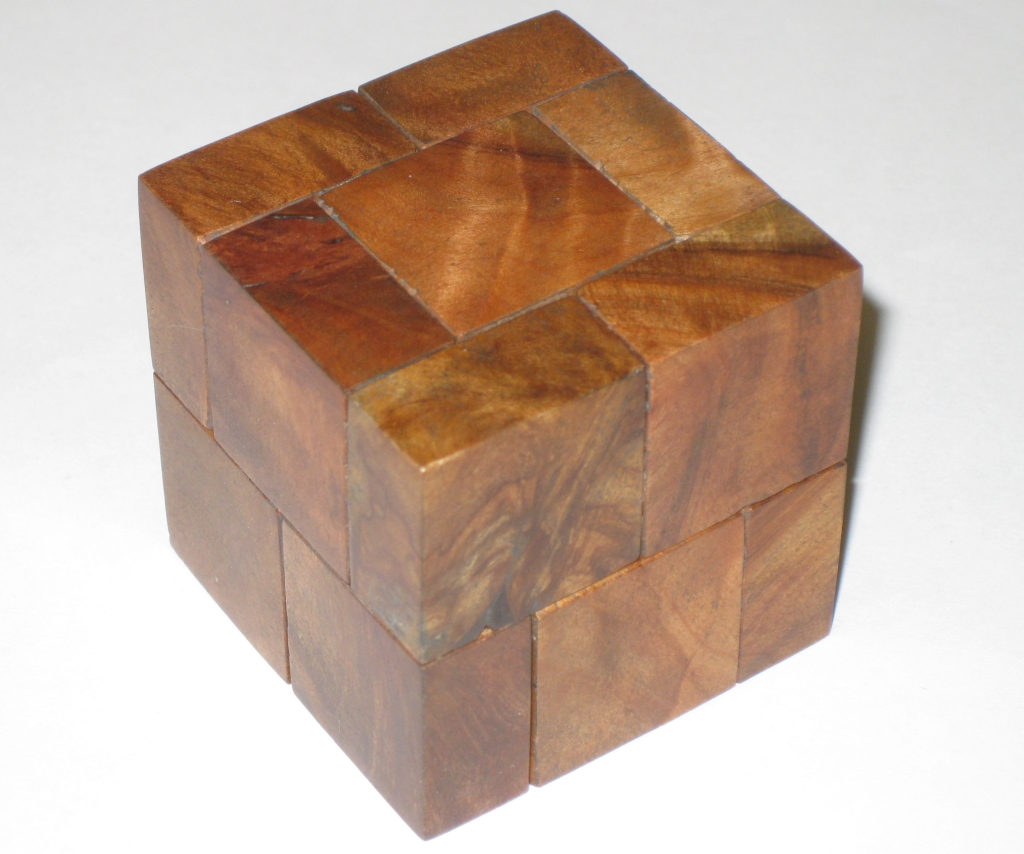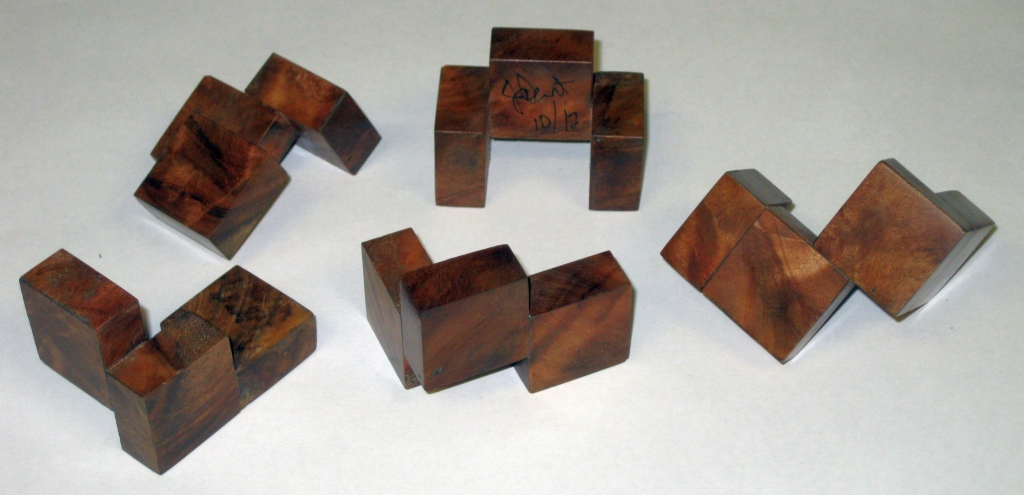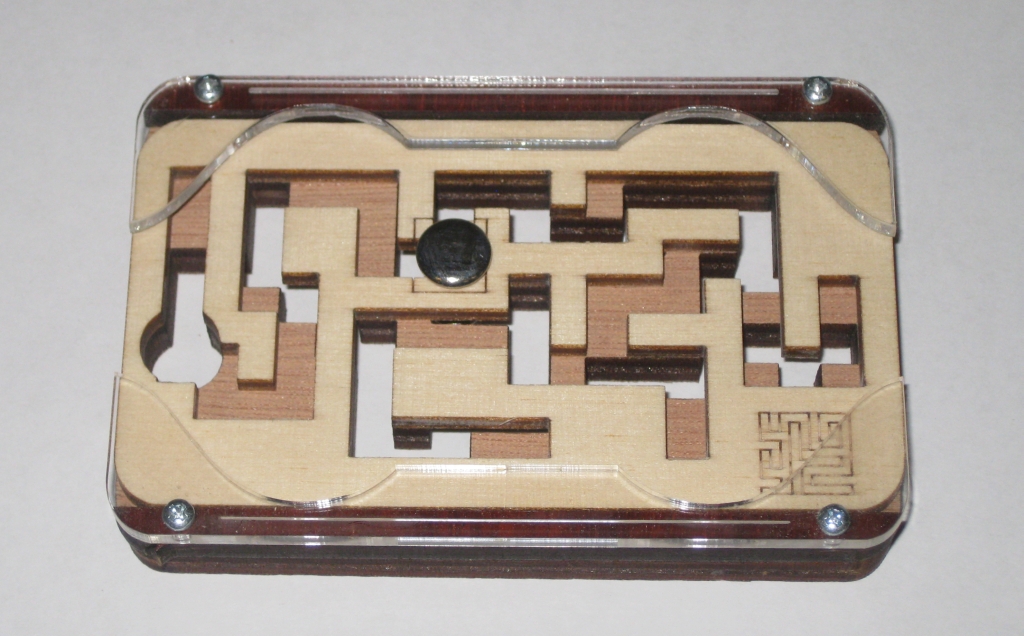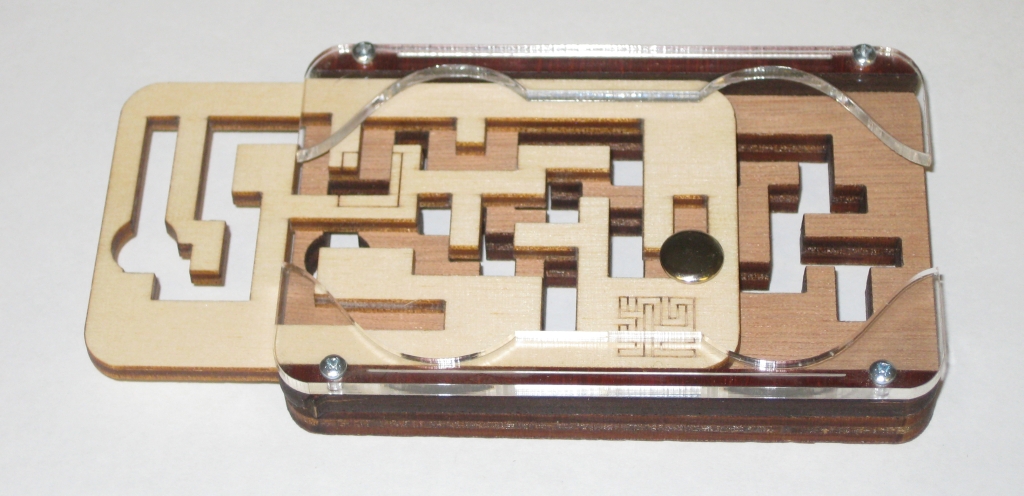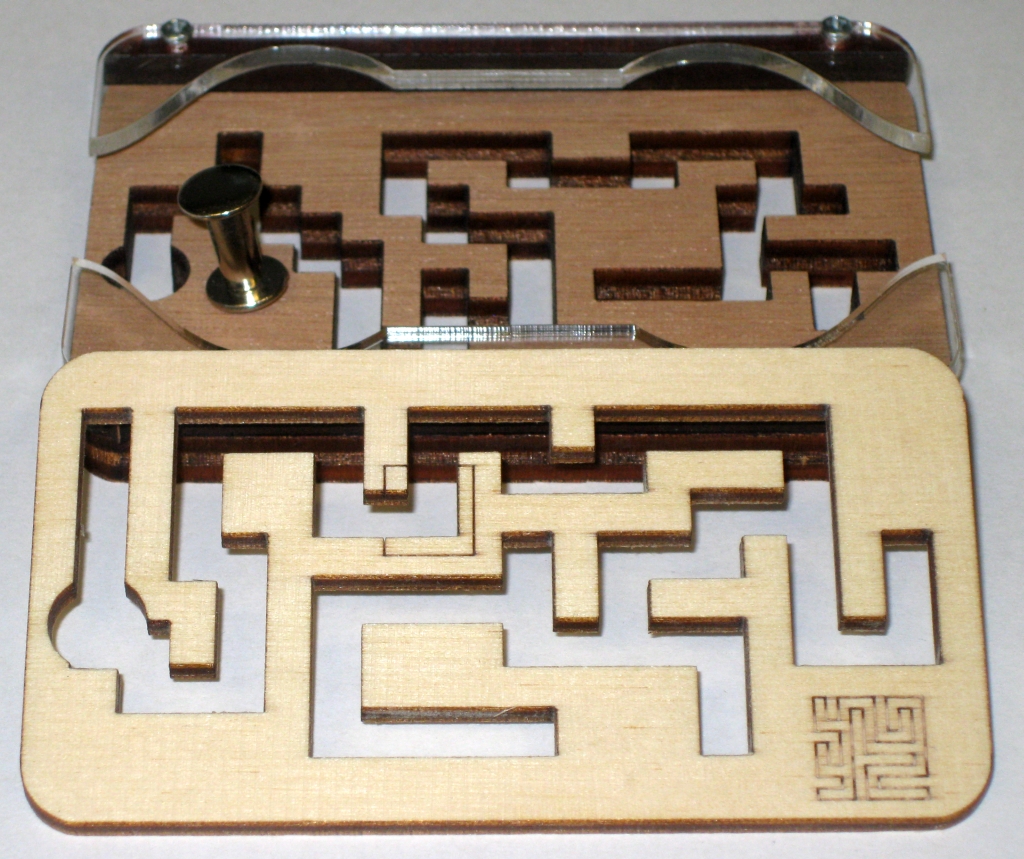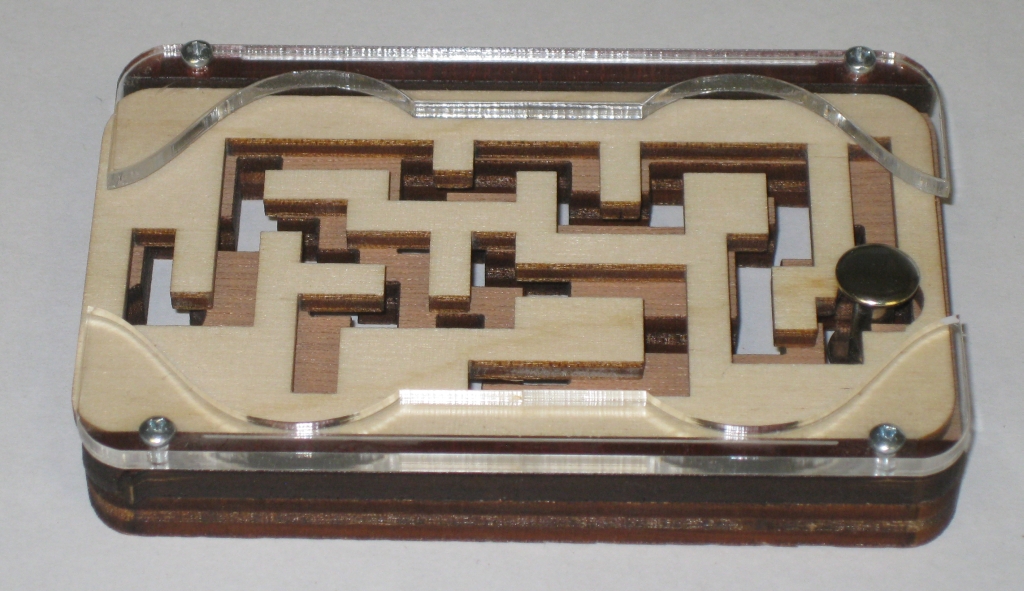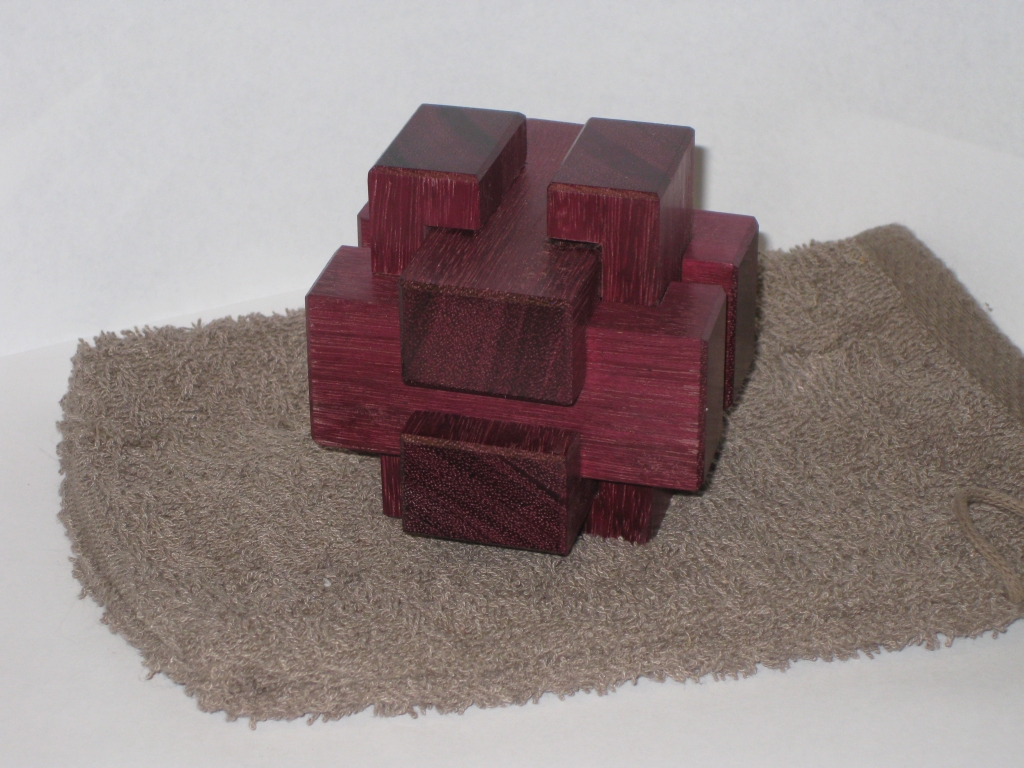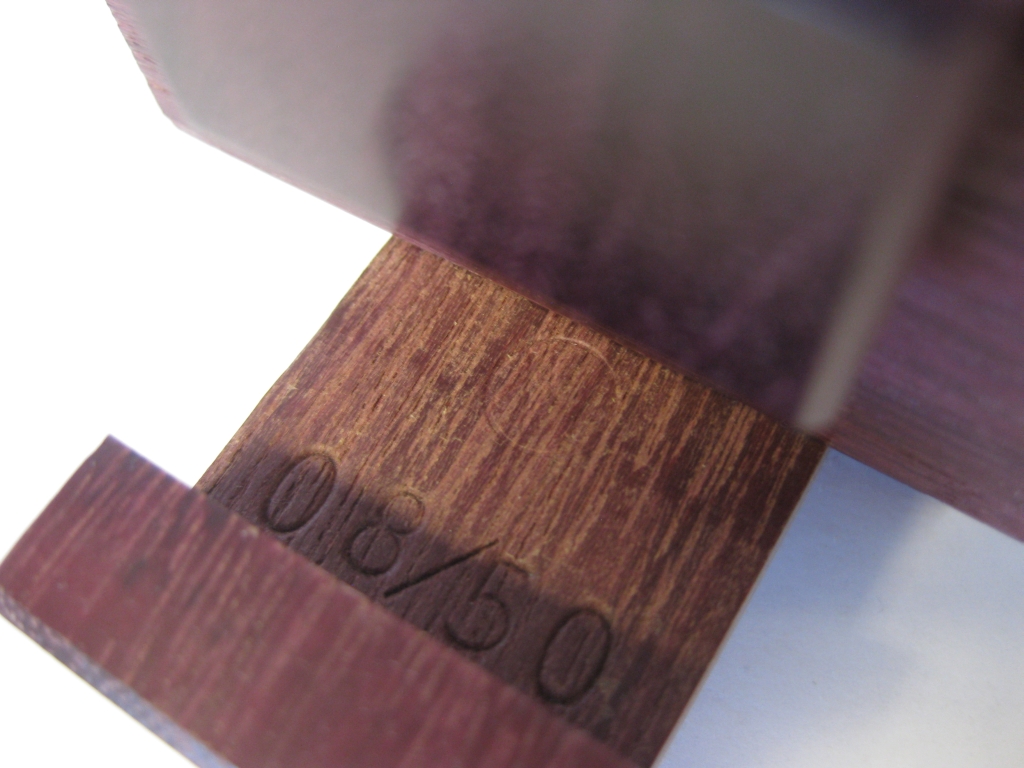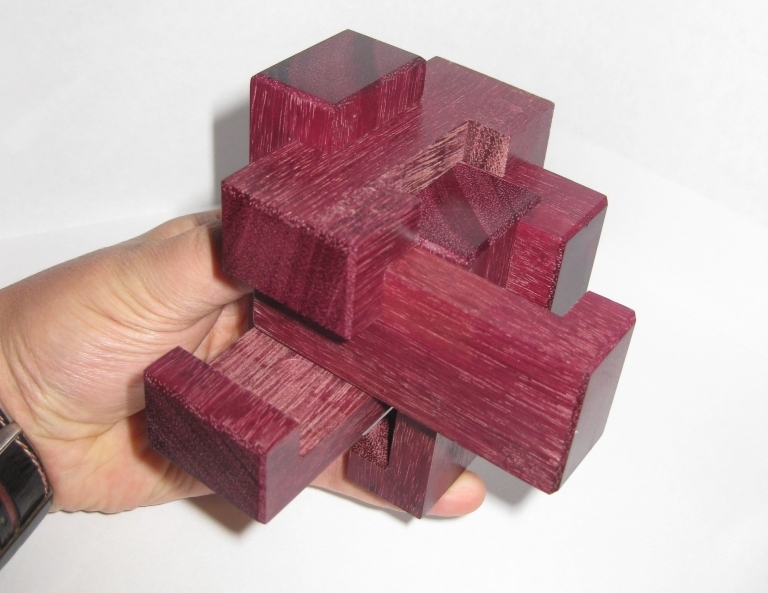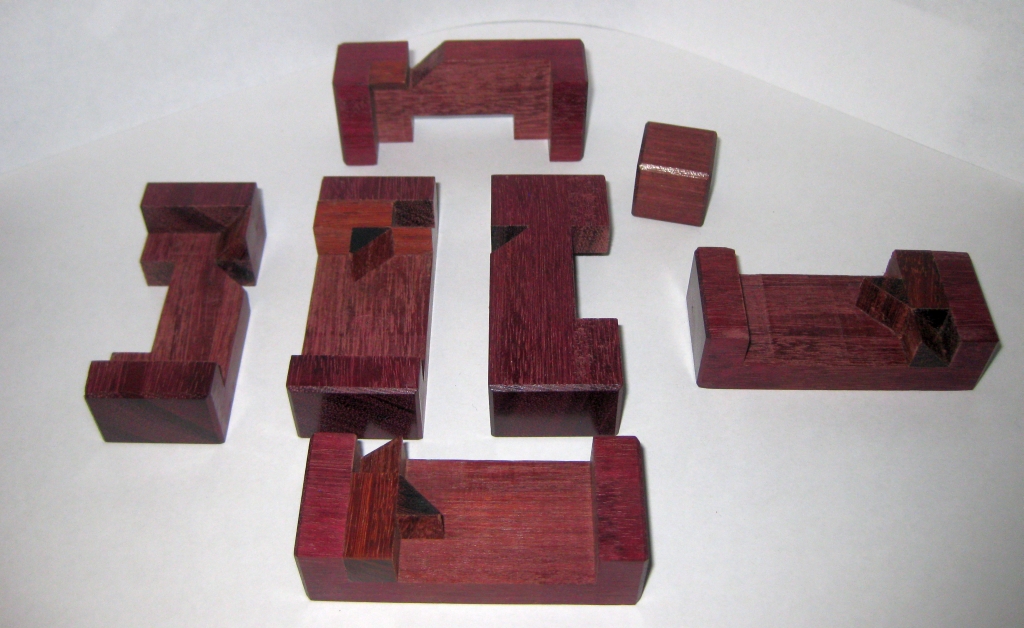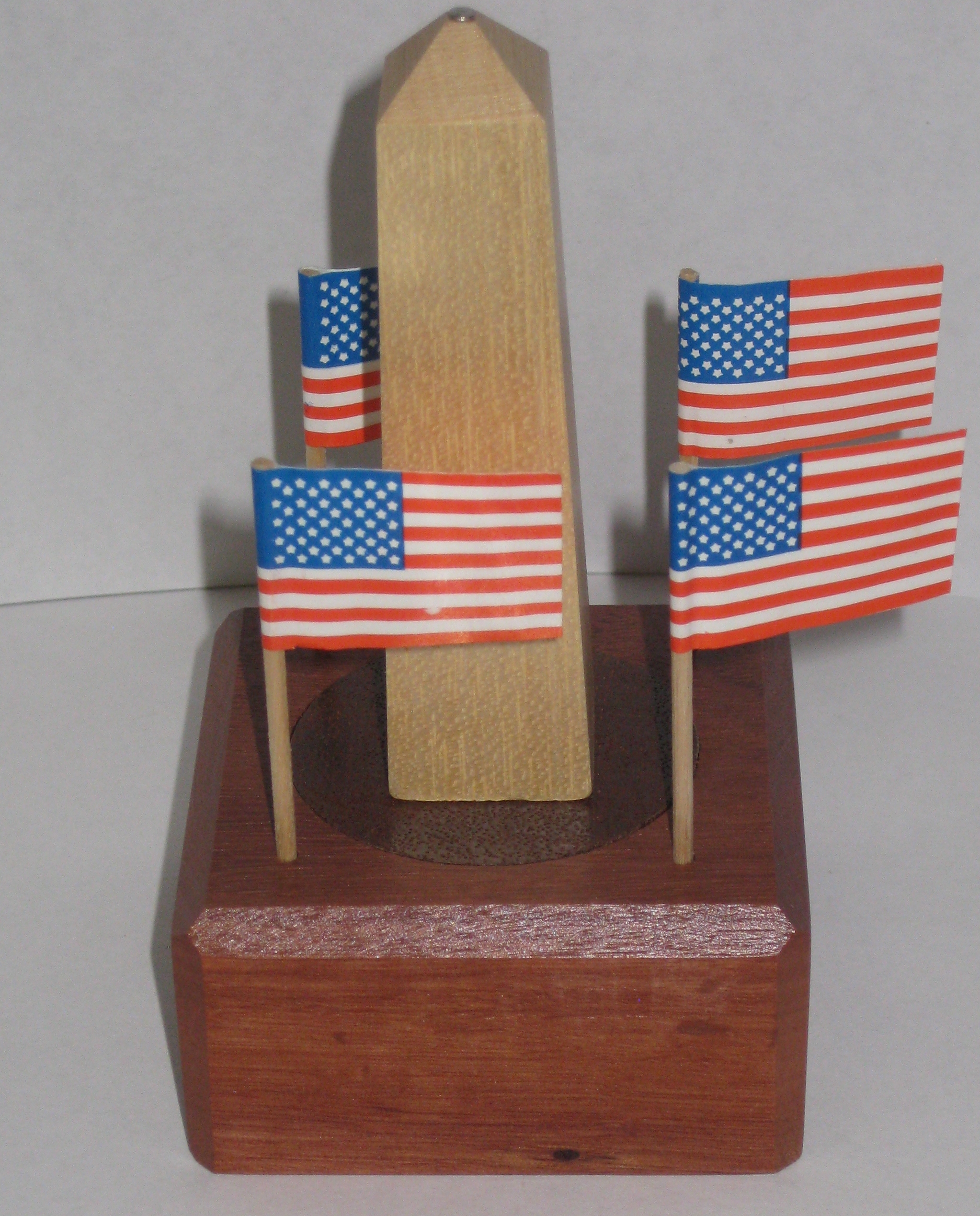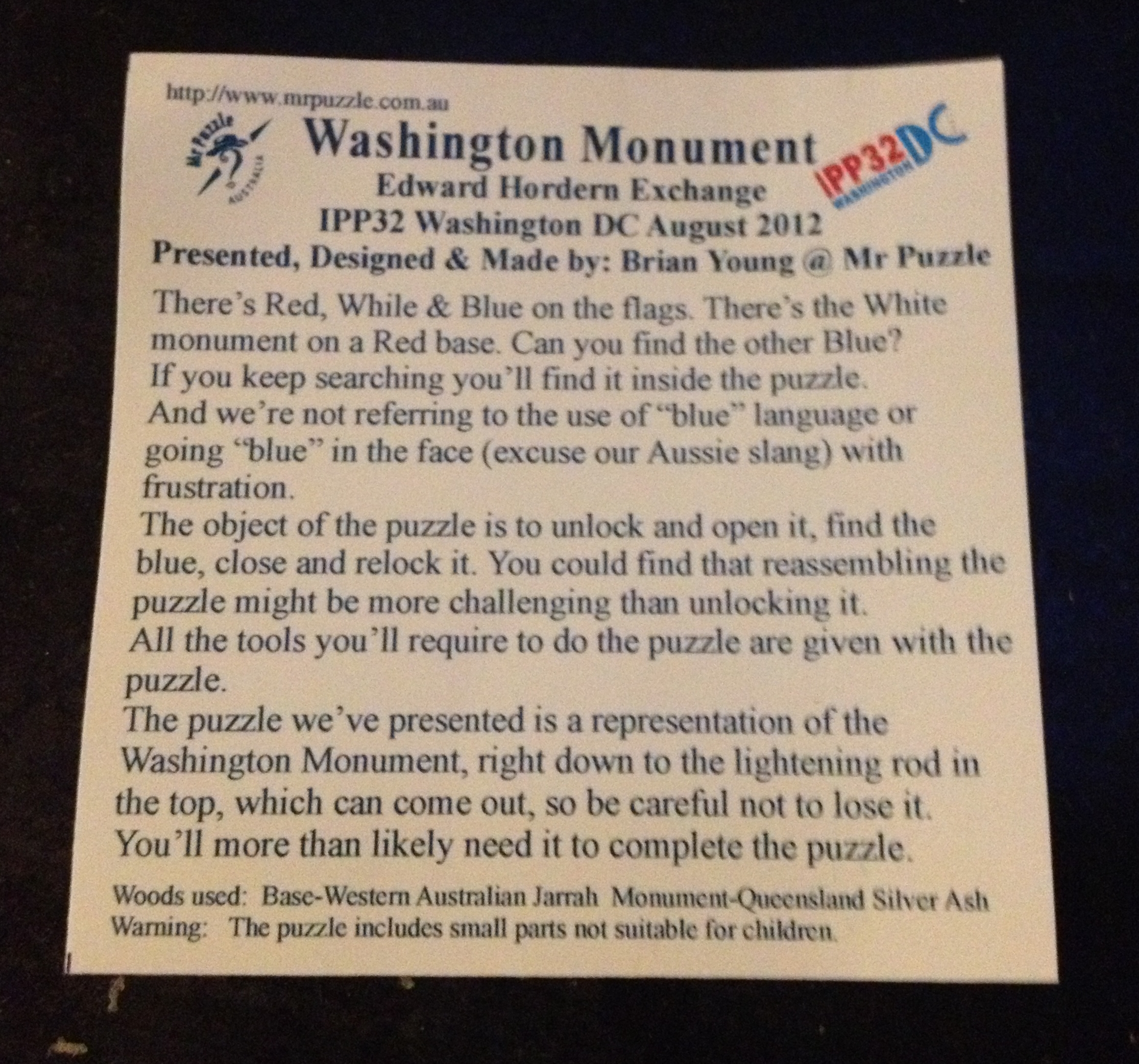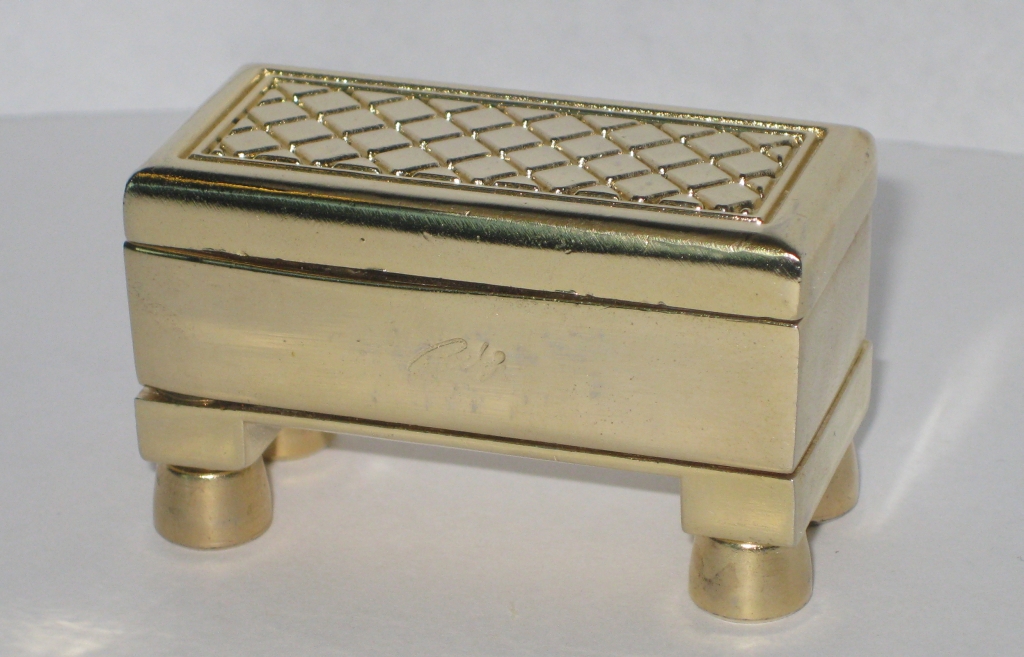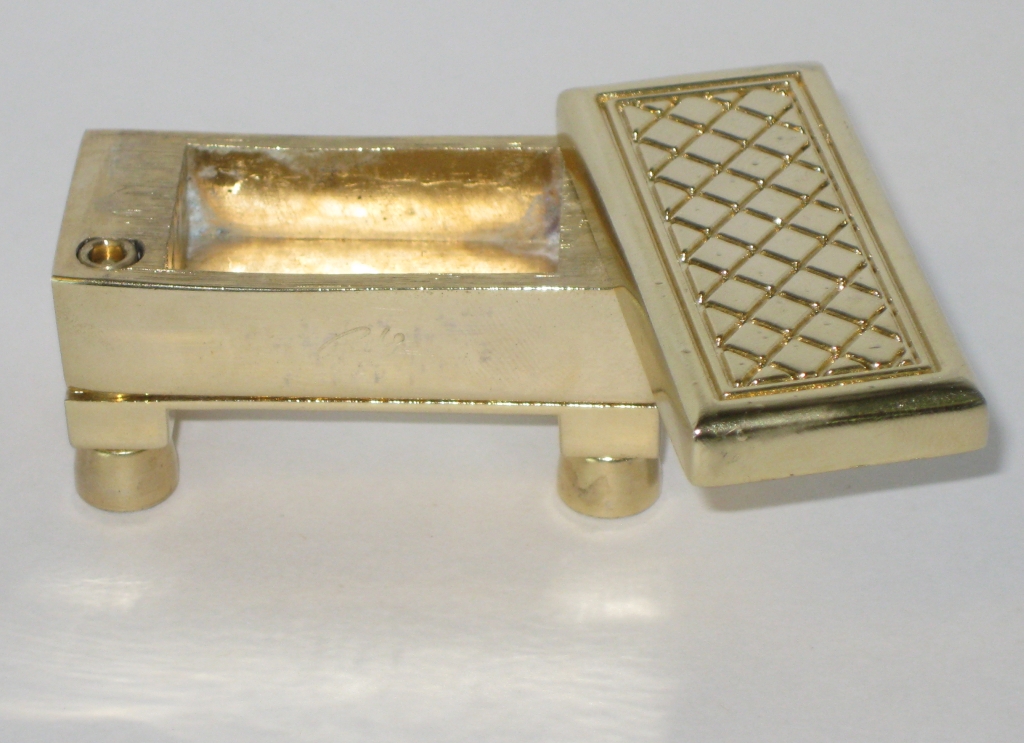Tritresor is another of Vinco’s mass produced puzzles and is available from Puzzle Master. Similar to the Cubetresor I reviewed previously, this is a three piece puzzle with a rather more triangular shape than the Cubic, four piece puzzle Cubetresor.
As you can see, this is a typical Vinco styled puzzle, where the wood used is carefully chosen to best highlight the pieces, or to hide the pieces in some cases. As ever the pieces are simply finished and nothing is dyed or stained to artificially change the colours. Measuring 3″ x 2.5″ x 2.5″ it’s a good size in your hands, and the contrasting colours of woods helps to make the design really pop. (Triforce on the side anyone?)
One thing I will note on my copy is that the fit of the pieces isn’t quite as exact as I have come to expect from Vinco’s puzzles, even his mass produced copies. There are several places where slight misalignment of the blocks which make up the three pieces add up to a less than perfect fit. It doesn’t affect the movement of the puzzle, and from the puzzle shelf, you’d never know, so really not much to complain about.
The puzzle consists of three unique pieces which must be separated to reveal a small wooden ball which you can hear rolling around, and then to restore the puzzle back to its original shape, and hide that ball back in the centre. As you can guess, there’s a reasonable space in the middle of the puzzle that the ball rolls around in, and if you’re not familiar with Vinco’s enjoyment for putting random balls inside his hollow puzzles, you could be forgiven for thinking it’s some kind of locking mechanism.
Taking the puzzle apart isn’t too challenging, and Vinco rates it as 3/5 on his scale. Puzzle Master gives it a Level 7/10. Coordinate motion is required to separate the pieces, and return them back to their original shape. If you’re not familiar with this style of puzzle, many people will avoid it as generally speaking coordinate motion puzzles require at least three hands, or several rubber bands and tape to successfully re-assemble them once they fall into a pile of pieces as you expand the original shape. In this case I’d say the Tritresor is a good starting point, as with only three pieces it’s not difficult to get the pieces in place, and the tolerances are not so tight that it’s frustrating to align them.
I disagree slightly with the difficulty ratings, as looking at the pieces will show that there’s only one way they can go together, and the fit is such that it’s not difficult to align the pieces to get the puzzle back to its original shape. Definitely more of an introduction to coordinate motion than a challenging assembly puzzle.
As ever Vinco’s puzzles are well made and great to hand around to people so well worth looking at the ‘Tresor’ series of puzzles. Expect another review from the series soon.
